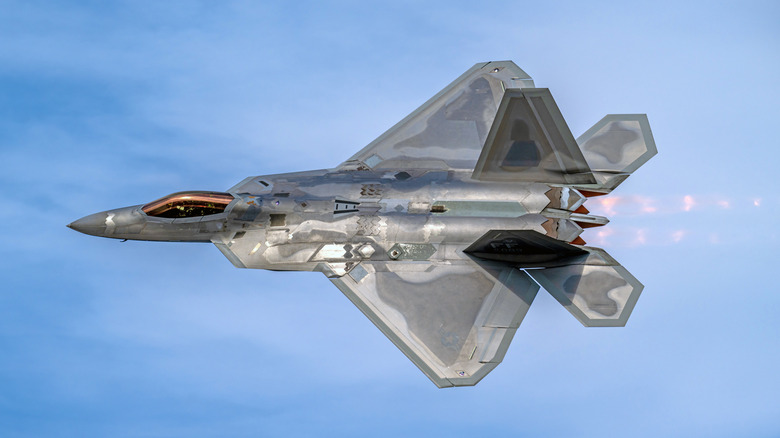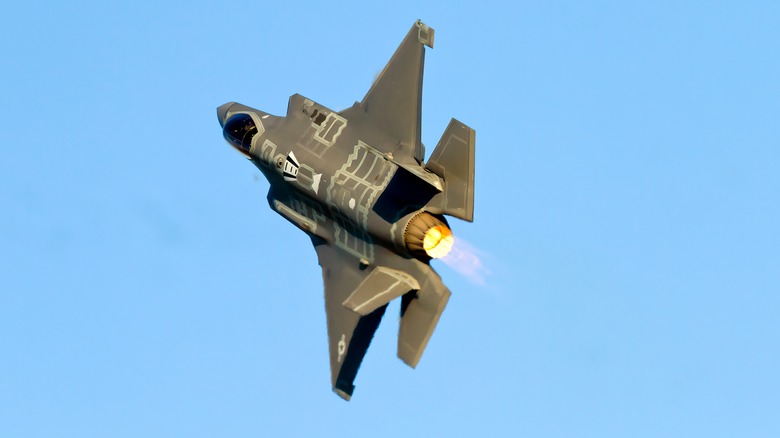
Kevin Burkholder/Getty Images
Since the retirement of the F-14 Tomcat, the U.S. Navy’s go-to fighter jet has been the F/A-18 Super Hornet. However, the Hornet is no fifth-generation jet like the F-22 Raptor. The Raptor is easily the most advanced fighter jet in the Air Force’s arsenal and contains enough proprietary technology that it has never been sold to a foreign country. The biggest strengths the Raptor has are its ability to avoid detection and limited radio frequency emissions. Even in a dog fight, when rival aircraft can physically see the F-22, it’s difficult for them to get a lock on the jet. It’s an aircraft that has redefined air superiority. In the day and age of fifth-generation jets, why wouldn’t the Navy use the Raptor as well?
Advertisement
This idea was, in fact, bounced around for a time during the ’90s as a «Sea Raptor.» However, adjusting the Raptor to do carrier takeoffs and landings would have required a serious overhaul that would have altered the aircraft’s entire functionality. In order to sustain the force of being launched from a carrier’s catapult system, it would have required a reinforced fuselage. Additionally, it would need a variable sweep-wing design like the F-14 in order to go slow enough for an arrested landing on the deck of a carrier. Not only would this redesign tack on additional costs to the already expensive platform ($350 million per plane), the variable sweep-wings would have altered impacted the jet’s small radar cross section, which is what makes it difficult to detect in the first place.
Advertisement
The fifth-gen jet the Navy uses instead

A. Michael Brown/Shutterstock
The «Sea Raptor» idea never coming to fruition didn’t mean the Navy was out of luck with getting its own fifth-gen fighter jet. It just took a little longer to come about. Precisely 24 years after the first F-22 Raptor was delivered to the Air Force, to be exact. The F-35C Lightning II became the Navy’s F-35 variant intended to replace the F/A-18C/D Hornet as its primary fighter jet. Its landing gear and wings have been modified to suit carrier landings and takeoffs. Since its wings are the largest of all F-35 variants, they fold upwards at the tips to accommodate other aircraft on the flight deck.
Advertisement
Similar to the F-22, the F-35C has a small radar cross-section, making it the first stealth fighter that can deploy for carrier operations. It’s also capable of supersonic speeds with its max speed around 1,200 mph or Mach 1.6 when its fully loaded. The F-35 platform is versatile, letting the jet fulfill multiple roles from taking on enemy aircraft in the air or targets on the ground to operating as an intelligence gathering craft. In the end, the Navy didn’t need a «Sea Raptor.» It just needed patience.